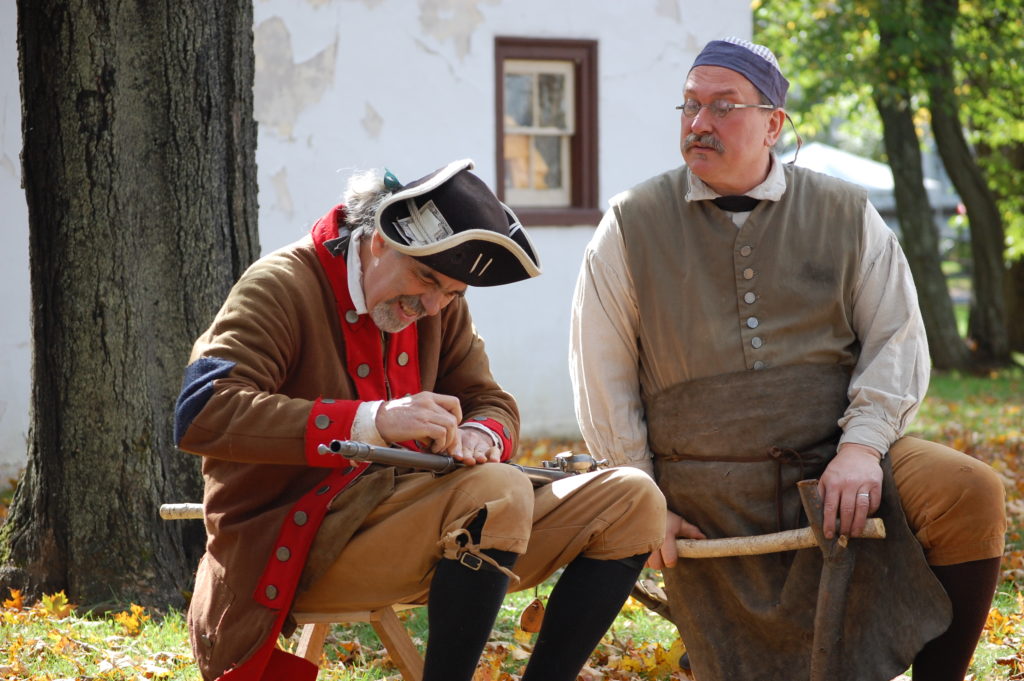 Washington Crossing Historic Park is known around the world for its annual reenactment of General Washington’s daring crossing of the Delaware River on Christmas Day in 1776.
Washington Crossing Historic Park is known around the world for its annual reenactment of General Washington’s daring crossing of the Delaware River on Christmas Day in 1776.
This event draws thousands of people every year to the park to watch as hundreds of reenactors row replica Durham boats across the river.
But the park is busy on the other 364 days of the year, too! Every day, the Friends of Washington Crossing Park work to educate the public about the historic events that happened here using a technique called historical interpretation.
The Job of a Historical Interpreter
A historical interpreter’s mission is to educate visitors about who was here in 1776, what they did, and why. Interpreters may lead a tour group at the Colonial Village or the Thompson-Neely House, but you may also find an interpreter working in the blacksmith shop or the Thompson-Neely Grist Mill on special occasions.
A historic interpreter is usually dressed in period-accurate clothing, and he or she is an expert on Washington Crossing Historic Park, the period surrounding the Crossing (the “Ten Crucial Days”) and life during the colonial era.
A first-person interpreter will take on the persona of a historical figure or a character, speaking and dressing as if they really are that person.
A third-person interpreter, on the other hand, will acknowledge that they are not in fact the person they are dressed like. Instead, they speak to park visitors as guides and experts. Most historical interpreters at the park use this method.
The main advantage of third-person interpretation is that interpreters can discuss a wide variety of topics without having to remain “in character.” For example, they can explain the history of the park, tell you who lived in certain buildings or answer questions that a colonial person wouldn’t know.
What About Reenactors?
Reenactment and historical interpretation both fall under the umbrella of “living history.” Both reenactors and historical interpreters are knowledgeable about a particular era and endeavor to educate the public about it. Reenactors, however, typically portray a historic event, such as a specific battle or military operation, that the public watches from a distance.
Most reenactors are not employed in the living history field and instead approach reenactment as a hobby and tradition. Because reenactments typically occur at or near the site where the event originally took place, they’re often familiar with the history of the area and may participate in annual reenactments at specific sites.
In fact, most of the people who participate in the annual Crossing reenactment have been doing so for many years. Some specialize in rowing the Durham boats that carry participants across the Delaware River, while others portray camp followers, officers, Washington’s Guard, and even the General himself.

